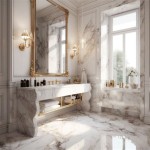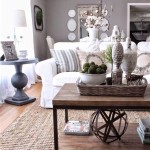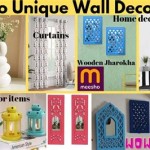Gothic Home Decor
Gothic home decor draws inspiration from the architectural style and artistic influences of the Gothic period, spanning from the mid-12th century to the 16th century. Characterized by a sense of drama, grandeur, and a touch of macabre, Gothic decor has evolved into a distinct aesthetic appreciated for its dark romanticism and ornate detailing. This style offers a rich palette for creating evocative and visually striking interiors.
Key elements contribute to the signature Gothic aesthetic. Dark, rich color palettes are fundamental, typically featuring deep jewel tones such as ruby red, emerald green, sapphire blue, and amethyst purple. Black, charcoal gray, and deep browns also play a significant role, setting a dramatic and often mysterious tone. These colors can be incorporated through wall paint, furniture upholstery, textiles, and decorative accessories.
Elaborate architectural details are another hallmark of Gothic design. While authentic Gothic architecture involves pointed arches, vaulted ceilings, and stained-glass windows, these elements can be alluded to in decor through arched doorways, decorative wall panels mimicking tracery, and window treatments that evoke the feel of stained glass. Ornate carvings, moldings, and decorative hardware further enhance the sense of intricate detail characteristic of the style.
Furniture in a Gothic setting often features dark, heavy woods such as mahogany, ebony, or oak. Pieces are typically substantial and ornate, showcasing intricate carvings, detailed inlays, and sometimes even gargoyle motifs. High-backed chairs, canopied beds, and elaborate chests are common furniture choices in Gothic-inspired interiors.
Textiles play a vital role in creating the desired ambiance. Heavy fabrics like velvet, damask, and brocade in rich colors add to the sense of opulence and drama. Patterns might include dark florals, intricate damasks, or even subtly macabre imagery like skulls or ravens. Tapestries, wall hangings, and decorative throw pillows contribute layers of texture and visual interest.
Lighting is crucial for establishing the mood of a Gothic space. Wrought iron chandeliers, candelabras, and wall sconces are common choices, providing a warm, flickering glow that adds to the atmosphere. Stained glass or colored glass lampshades can further enhance the dramatic effect. Strategic placement of lighting can highlight architectural details and create intriguing shadows, enhancing the overall aesthetic.
Decorative accessories contribute to the overall narrative of the space. Antique or antique-inspired items, such as ornate mirrors, carved frames, and religious iconography, are frequently incorporated. Collections of curiosities, such as taxidermy (faux or ethically sourced), antique books, and scientific instruments, can add a touch of the macabre and contribute to the layered, curated look often associated with Gothic design.
While embracing the darker aspects of the aesthetic, it's important to avoid creating a space that feels gloomy or oppressive. Balancing the dark color palette with carefully chosen lighting and incorporating metallic accents, such as silver, gold, or bronze, can prevent the room from feeling too heavy. Strategically placed mirrors can also help to brighten the space and create an illusion of greater size.
The modern interpretation of Gothic decor allows for flexibility and personalization. One can embrace a full commitment to the aesthetic or incorporate select Gothic elements into an existing design scheme. For example, a single ornate mirror, a dramatic chandelier, or rich velvet curtains can introduce a touch of Gothic romance without transforming the entire space. This adaptability makes Gothic decor a surprisingly versatile option for those drawn to its unique blend of drama, elegance, and historical influence.
When designing a Gothic-inspired space, consider the architectural features of the room. High ceilings and large windows lend themselves particularly well to the grandeur of the style. However, even smaller spaces can be transformed with careful attention to color, lighting, and decorative details. The key is to create a cohesive and curated look that reflects the dramatic and romantic spirit of Gothic design.
Maintaining a balance between the dramatic and the livable is crucial. While incorporating elements like skulls, gargoyles, and dark imagery can enhance the Gothic aesthetic, it's essential to use these elements thoughtfully to avoid a space that feels overly theatrical or kitsch. Subtlety and curation are key to achieving a sophisticated and stylish Gothic interior.
Finally, the beauty of Gothic decor lies in its ability to evoke a sense of history and mystery. By carefully selecting furniture, textiles, lighting, and decorative accessories, one can create a space that feels both timeless and deeply personal. This unique blend of drama, elegance, and historical influence makes Gothic decor a captivating choice for those seeking a distinctive and evocative aesthetic.
Meet 3 Homeowners Who Have A Taste For Gothic Interior Decor

Gothic Decor For Interiors Best Goth Home Ideas

Pin By Raindancing On Reference Interiors In 2025 Gothic House Dark Home Decor Fantasy

Pin By Julia On Decor Dark Home Gothic Living Room

Gothic Decor For Interiors Best Goth Home Ideas

Antique Gothic Room Decor Bedroom Home
Meet 3 Homeowners Who Have A Taste For Gothic Interior Decor

Gothic Decor For Interiors Best Goth Home Ideas
What Are Some Ideas For Gothic Home Decorations Quora

Pin By Hadewych On Room Gothic Home Decor Goth Dark







